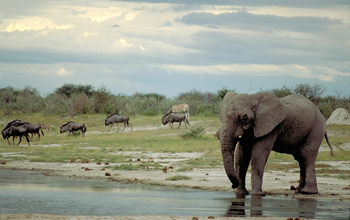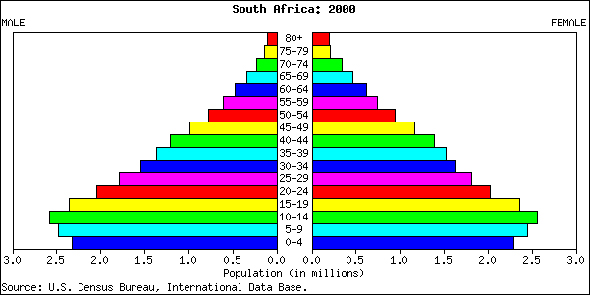African Conflict: Humans and Wildlife in Competition
March 19, 2008
 With fertility rates like Uganda’s 6.84 and the Democratic Republic of the Congo’s 6.37, Africa faces a massive challenge to reduce its rate of population growth. No nation on the continent can lay claim to a high level of development, though some pockets exist. As a result, humans already stress infrastructures far beyond what they can comfortably support. Even South Africa, with a 2.16 fertility rate, expects to increase its numbers by a significant amount over the next several decades due to its large proportion of youths.
With fertility rates like Uganda’s 6.84 and the Democratic Republic of the Congo’s 6.37, Africa faces a massive challenge to reduce its rate of population growth. No nation on the continent can lay claim to a high level of development, though some pockets exist. As a result, humans already stress infrastructures far beyond what they can comfortably support. Even South Africa, with a 2.16 fertility rate, expects to increase its numbers by a significant amount over the next several decades due to its large proportion of youths.
Despite the AIDS epidemic, the United Nations medium variant forecasts that Africa’s population will exceed 2 billion by 2050, more than double its current level. In addition, this estimate is based on an assumption of greatly reduced fertility rates, which might not be realized.
While the figures for humans continue to grow at a breakneck pace, wildlife conservation efforts have enjoyed some promising results. Unfortunately, these developments have led, in some cases, to human-animal conflicts.
According to research reported in the Proceedings of the National Academy of Sciences, 23,000 African elephants were slaughtered for their tusks during 2006. Though this has led to a further decline in numbers across much of central Africa, Southern Africa, home to nearly 60% of the continent’s elephants, has witnessed a significant growth in the animals’ count. For example, in South Africa’s Kruger National Park, culling ended in 1994. Since then, the population has increased by 75% to 14,000, and this number is expected to double by 2020.
Problems arise because an adult elephant consumes up to 660 pounds of vegetation a day. This brings them into conflict not only with farmers but with other species as well. In northern Botswana, subsistance farmers see as much as 40% of their crops destroyed by elephants. Proposals for further culling are now on the table, though they are highly controversial. Other options are also being explored, such as relocation and reduction in the number of watering holes.
As the continent’s human population continues to rise, competition between wildlife and humans may become more severe.






